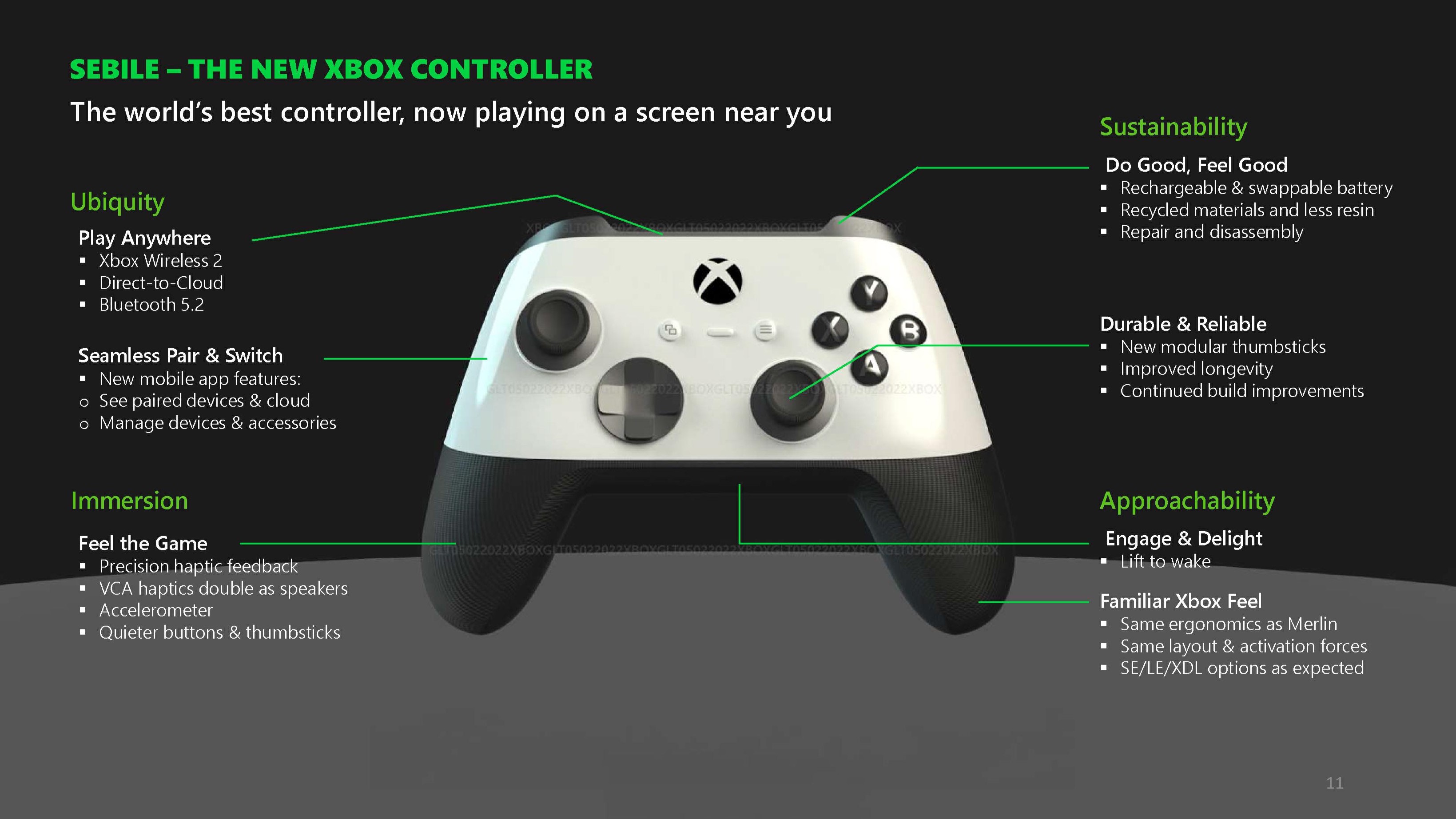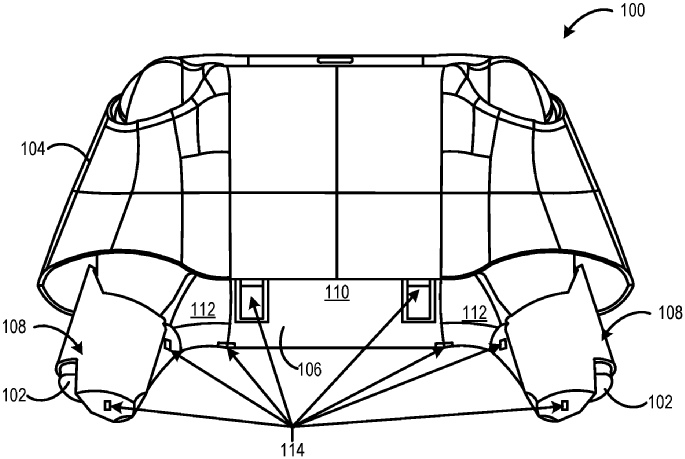- Microsoft documents leaked last year revealed a new Xbox controller codenamed Sebile.
- It seems that the controller hasn’t been cancelled, and should arrive with next-gen Xbox hardware.
- A new patent details additional aspects of the controller, including boosted haptics.
Remember last year, when a ton of sensitive Microsoft documents leaked as part of an accident with the Activision-Blizzard acquisition hearings? You’d be forgiven for forgetting, given everything that’s happened between now and then, but one of those leaks is particularly relevant today.
Merry Christmas and Happy Holidays depending on what you’re celebrating, but the wheel of Xbox news never stops turning at Windows Central. To that end, I found myself browsing the latest Microsoft patent filings as I’m wont to do when bored, and I happened upon something that lends further credibility to something I’ve been investigating lately.
As part of the cancelled mid-gen Xbox consoles Brooklin and Ellewood, Microsoft had also planned a new controller dubbed Sebile. The controller is detailed below, showcasing “direct-to-cloud” connectivity, similar to Stadia, alongside various other improvements.
While Ellewood and Brooklin seem to have been cancelled, I’ve got it on good authority that Sebile still exists, and is planned to launch alongside the next generation of Xbox console hardware.
A patent filed this month in the United States is unmistakably Sebile, owing to the configuration of the plastic housing (also first spotted by Tech4Gamers.) In the Sebile leaks above, one aspect of the controller that always seemed a little odd was the grips, which look a bit like the controller is wearing trousers. In the patents below, it seems that it’s by design for a couple of reasons. Microsoft wants to retain the ergonomic feel of the existing range of Xbox controllers, but it seems that the grips also house new haptic motors that can direct “high definition” impulses. The patent describes how the new motors are spread throughout the device, and should actuate consistently irrespective of how the player moves the housing of the controller.
The patent describes how the pulses and vibrations can be tuned to mimic a wide variety of sounds and motions, and can even move independently of the controller’s housing. Crucially, it also suggests that the haptic motors will be able to mimic previous-style vibrations for backwards compatibility purposes, eliminating the need for developers to intervene to make their games work on the new controller.
Another interesting aspect of Sebile is the fact it will borrow a feature from Stadia, in that it will connect directly to cloud games over Wi-Fi. Players will be able to directly point the controller at different devices via an active devices list of sorts, similar to how you can point Spotify to different devices you’ve connected your account to. By bypassing Bluetooth, it should help eliminate a few additional milliseconds of latency when playing games in the cloud, which might not seem like much, but it makes an uncanny amount of difference, and was a big contributor as to why Stadia often felt “faster” than competing solutions at the time.
We’re hearing that this controller, however, won’t launch before the next range of Xbox hardware does. Microsoft is expected to be working on an Xbox handheld as well as a more traditional Xbox console to replace the Xbox Series X. We also have some tentative confirmation that Microsoft is also planning to let OEMs like Dell, Lenovo, and ASUS build Xbox consoles too, targeting retail markets and price points where Microsoft has yet to really gain a foothold.
If the previous document remains true, the controller should also have swappable and rechargeable batteries, Bluetooth 5.2, a new “lift to wake” detection power-on feature, boosted construction reliability, and increased repairability. Microsoft aims to use more recycled materials and reduce reliance on resin and glue for the new controller, to help players fix their own stuff. What remains to be seen, though, is the price. All these new features likely won’t be cheap, although it stands to reason that Microsoft will continue selling the current-gen Xbox controllers in addition to this new one. Not everyone will want or need cloud compatibility, after all. We’re still missing an Xbox Elite Controller Series 3 from the equation, too.
What do you want to see in a new Xbox controller? Hit the comments, let us know.






